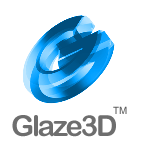 Both
the GeForce 256 and Savage 2000 are offering T&L support. Is this the next
big step in 3D rendering?
Both
the GeForce 256 and Savage 2000 are offering T&L support. Is this the next
big step in 3D rendering?
It is real simple, Triangle throughput and pixel fillrate with excellent quality are the two issues. We believe at this time that fillrate is more of an issue and so we have concentrated our silicon budget in this area.
Geometry acceleration will be important, but at present with the performance of the Intel and AMD CPU's really moving and the current polygon count that we are looking at over the next 18 months from the top game companies, it is not clear if spending your silicon budget on floating point is the best strategy.
Your online FAQ states:
"The dedicated floating point unit we have on the Glaze3D is capable of doing T&L, but we intend to leap into totally new geometry performance level with our forthcoming geometry processor."
So will the Glaze3D support T&L or not?
We will not have hardware geometry support in the first XBA enabled products.
Tell us a little more about this "forthcoming geometry processor." Is it a separate chip designed to work in conjunction with the Glaze3D, or an all new design with integrated T&L? If separate, will it be available as an upgrade to initial Glaze3D offerings?
We are discussing how to implement geometry into the XBA architecture based chips and not release the separate geometry processor. This will allow us to distribute the geometry load for multiple chips.
What do you think of 3dfx's T-Buffer? How does it compare to the accumulation buffer that the Glaze3D will offer?
All indications point to the fact that it is basically an accumulation buffer at its core.
What sort of performance hit do you anticipate with full scene anti-aliasing enabled?
This is where XBA is going to rock. With the amount of actual fillrate we have at our disposal we will be able to do full scene Anti-Aliasing with real supersampling. By having the memory bandwidth and the 8-texel engine, we will see AA actually used by the enthusiasts gamer!
Will your Environment bump mapping be compatible with Matrox's EMBM and all the games that support that implementation?
Actually Bitboys is the inventor of bump mapping and licensed the technology to Microsoft. Our part will defiantly support environmental bump mapping as it is one of the most important issues for visual quality in 2000.
Do you plan to support alternative OS's, such as Linux, BeOS, or even the MacOS?
We will be supporting Linux ourselves and I do anticipate working with 3rd parties on MacOS.
We appreciate you taking the time out to answer all of our questions. We look forward to seeing the Glaze3D in the AnandTech lab soon!










0 Comments
View All Comments